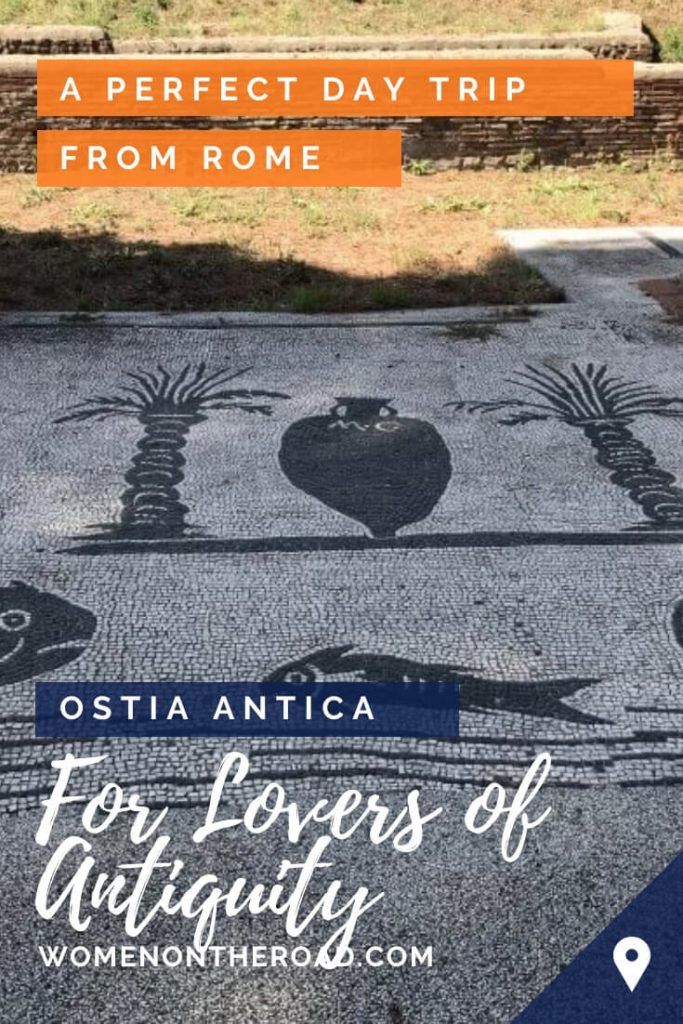Are you looking for the best day trips from Rome? I visited Ostia Antica, Castel Gandolfo, and the village of Norma in the space of a week. I’d often been to Rome but never to its surroundings – what a discovery!
Italy is full of delightful corners corners and the capital may be wonderful, but sometimes, you just want to get away from the bustle of Rome. Best of all, each of these makes a great day trip.
They can all be done by public transport of varying levels of difficulty, but in one case at least (Norma) a car would be best. I’ll explain it all below.
NOTE: This page may contain affiliate links, which bring in a small commission at no extra cost to you.
1. Archaeological site of Ostia Antica
In a country stuffed with historic sites, this one is stunning. If you swoon at the sight of Roman ruins and archeological sites, you’ll marvel at the 50 hectares (124 acres) of Ostia Antica, one of the best places to admire the Roman empire this side of Pompeii and Herculaneum (and an ideal alternative if you’re not going to Naples, the jumping off point for both). It’s such an easy day trip from Rome!
Once the official port of Rome, the silting of the River Tiber eventually condemned this large city to near-extinction, as did the eventual crumbling of Rome itself.
Walking into the archeological site through the Porta Romana − the monumental entrance for those arriving directly from Rome − is breathtaking, the sweeping cobblestoned Decumano Massimo sweeping forward into the distance.
This is the backbone of the ancient city, with the remnants branching off on either side of the road. (For some reason, the area’s application for protection as a Unesco World Heritage Site has been deferred.)
The stunning theater will mesmerize you. Its graceful semicircle slopes downward, step by step, until it reaches the stage, still used for special performances today.
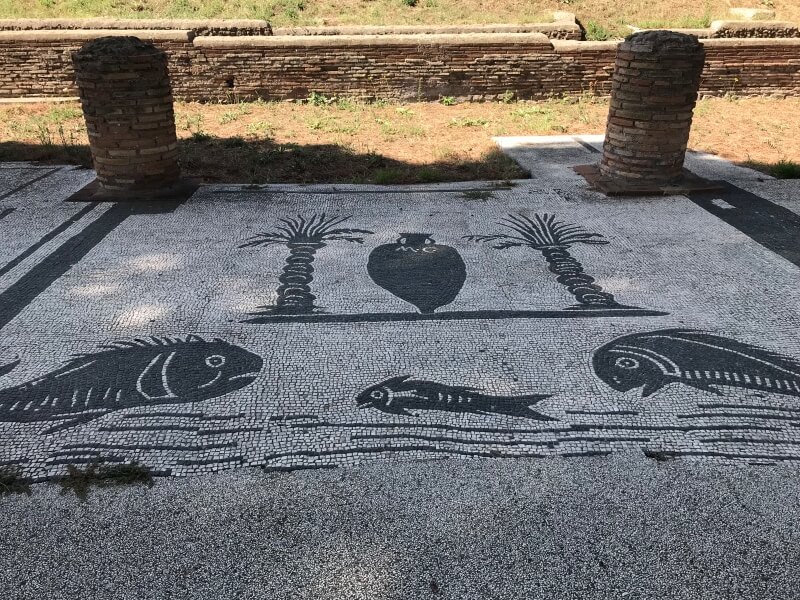
Go early, go off-season, and avoid the crowds, although the site is large enough to accommodate everyone.
Don’t miss these stunning ancient ruins:
- Baths of the Cisiarii, or cab drivers, who ferried passengers back and forth from Rome
- Baths of Neptune, one of the largest complexes in the city
- Barracks of the Vigiles (firemen) – this is where the firefighters stayed (fires among the grain stores and warehouses were common)
- Casseggiato dei Doli, a dolia being a large terracotta jar to store food, oil or wine
- Forum square and the Forum Baths
- The Round Temple, the Temple of Hercules, the House of Cupid and Psych
- Christian Basilica
- Synagogue, which dates back to mid-first century AD
Ostia lasted a millennium. The oldest buildings date back to the third century BCE, but the heyday was between the 1st-3rd centuries CE in Ancient Rome, when population reached 100,000. The city was eventually abandoned in the 9th century.
The best place to see the artwork that emerged from this city is in the on-site archaeological museum, a delightful collection of Grecian sculptures (adapted by the Romans, of course)
A fun way to explore Ostia Antica − in addition to following the rudimentary pamphlet that accompanies the audio guide, should you choose to rent one − is to wander down what qualifies as “back alleys”, the small streets that criss-cross the old city, lined with little more than crumbling foundations, with the occasional surprise − a fresco here, a mosaic there.
Make sure you bring along some drinking water and wear good walking shoes or sandals – you’ll be trudging along sand and dirt and tumbling over cobblestones. This may be one of the region’s major tourist attractions, but it still lives in Antiquity.
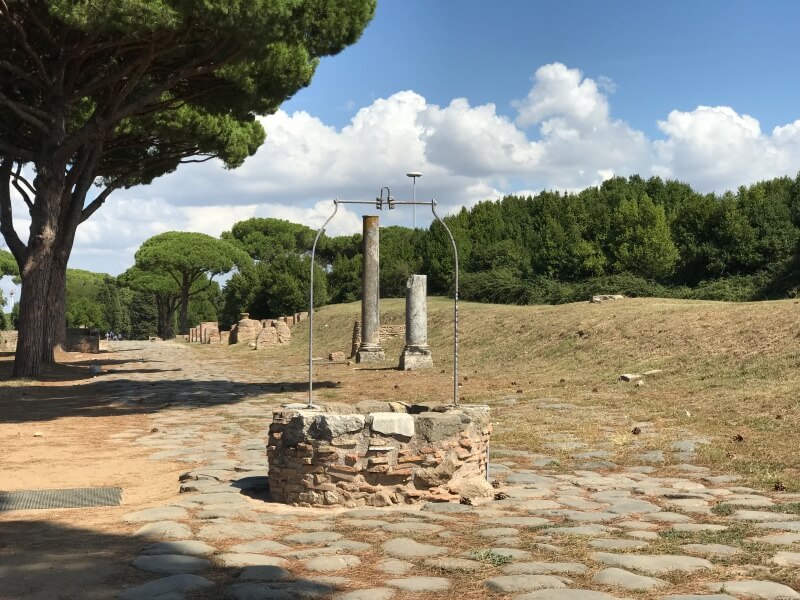


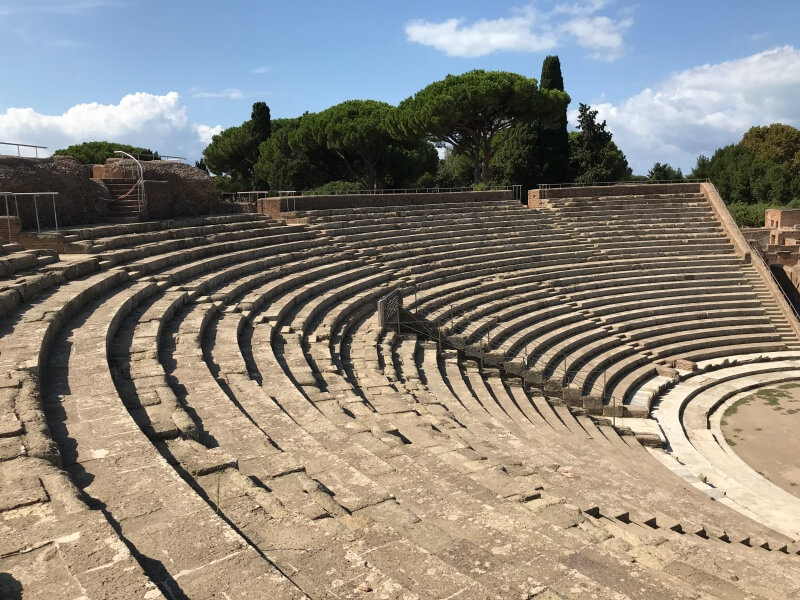

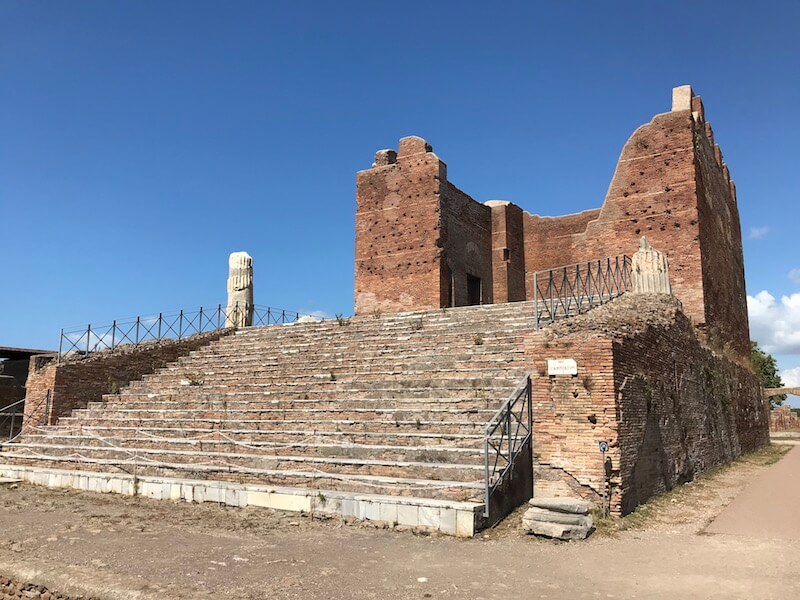
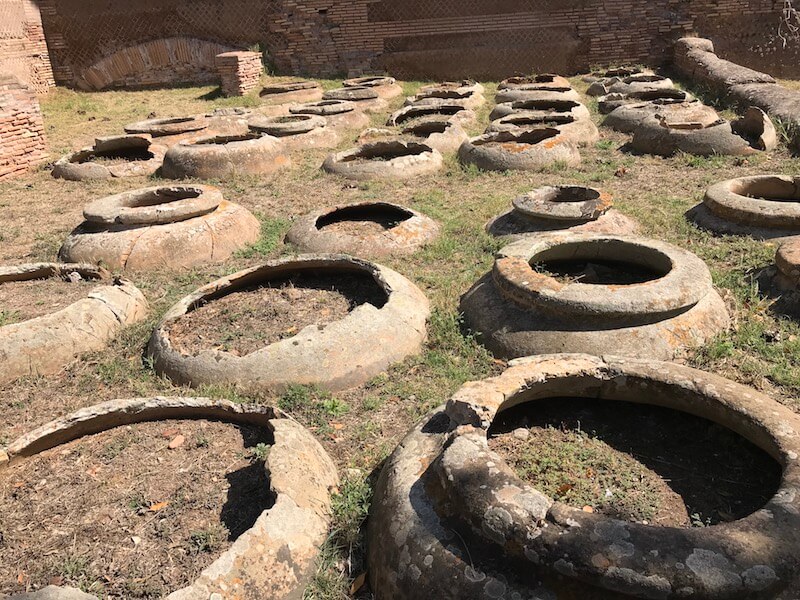
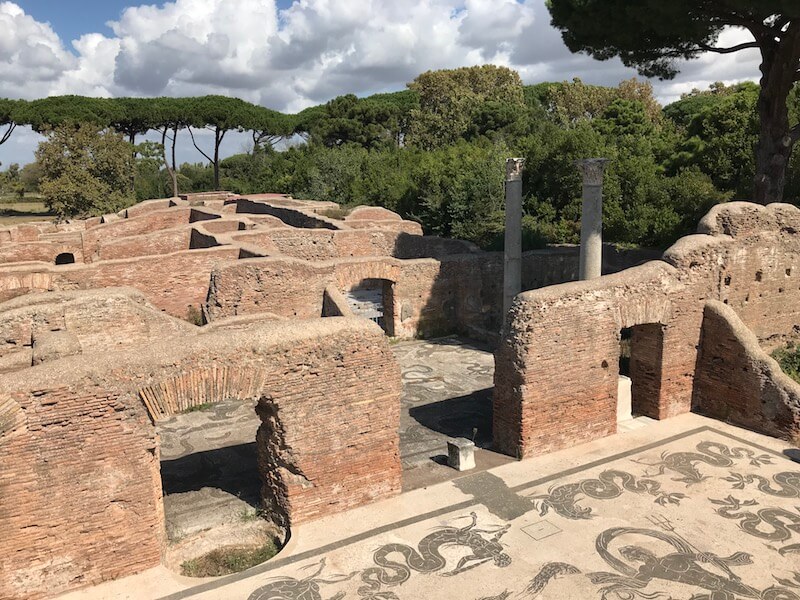
Rather than stay in Rome, I spent the night in the small town of Ostia, Rome’s weekend beach getaway, which I found perfectly pleasant. I stayed at the modest Hotel Sirenetta, right on the beachfront, a few minutes’ walk from the Ostia train station.
Beware though: typically in Italy, beachfront is private and to get onto the sand you’ll need to rent your little patch, along with cabana and beach umbrella. Walking along the boardwalk won’t provide any glimpse of the sea…
Getting to Ostia Antica
This is one of the quickest day trips from the Eternal City. If you’re staying in Rome, you can either take a cab or public transportation. The easiest route is to take Metro Line B to Piramide. Then switch to the Roma Lido commuter regional train and get off at Ostia Antica. Follow the signs for ten minutes or so to get to the ruins.
If you don’t want to battle with public transportation on your own and would like a guide to the ruins, take a worry-free half day tour from Rome to the ruins.
2. Castel Gandolfo, the popes’ summer residence
This luxuriant area in the Castelli Romani region is so pretty some popes come here to get away from the summer heat of Vatican City. It’s a skip and a jump by train from the capital, one of the easiest and most popular day trips from Rome.
The town itself is small and simple and seductive, having welcomed summer visitors for centuries. It winds along the volcanic Lake Albano, of a deep turquoise so intense any photograph looks manipulated.
As many oft-visited Italian towns, you’ll find a charming central square, surrounded by cafés whose wood and straw chairs crowd the perimeter.
Along the main cobblestoned street, outdoor tables mix with gelato and souvenir shops to welcome tourists waiting to visit the Papal Palace, which dominates the town and should be your first stop. The palace has belonged to popes since 1596 but the villa has undergone many changes and only gradually became a papal hideaway, several renovations later.
But what people are really coming for are the Barberini Gardens, laid out in geometrical perfection behind the castle walls. Once for papal eyes only, Pope Francis opened the 55-hectare gardens to the public.
In the gardens you’ll also find the ruins of Emperor Domitian’s palace, upon which the complex was built. You can only visit with a guided tour and you’re advised to book tickets in advance through the official website. That said, the Saturday I stopped by, tickets were being sold at the door. Still, better safe than sorry.
The complex at Castel Gandolfo is made up of several summer papal villas, the oldest of which dates back to medieval times. Once owned by a wealthy family, the Gandolfi, it only became a papal residence in the 17th century.
Urban VIII was the first pope to make this his summer home and expanded the property, adding a new wing overlooking the gardens and the lake. Within the complex is an observatory, Villa Cybo, Villa Barberini, a summer college, an old monastery and the convent of the Albano Clarisses.
Heading down towards the lake from the town is my own favorite restaurant here − the fourth-generation Antico Ristorante Pagnanelli (here’s their Facebook page). I liked it so much I went twice in two days! For the food, of course (see evidence below), but for the view and the excellent wine cellar set up like a mini-family museum and well worth time exploring.
While Castel Gandolfo is a lovely place to spend the day, if you have a car you can go further afield to the nearby towns of Nemi, Albano or Ariccia, through the winding forests and lakes of this lovely region. Or to Norma, my final day trip choice (see below).

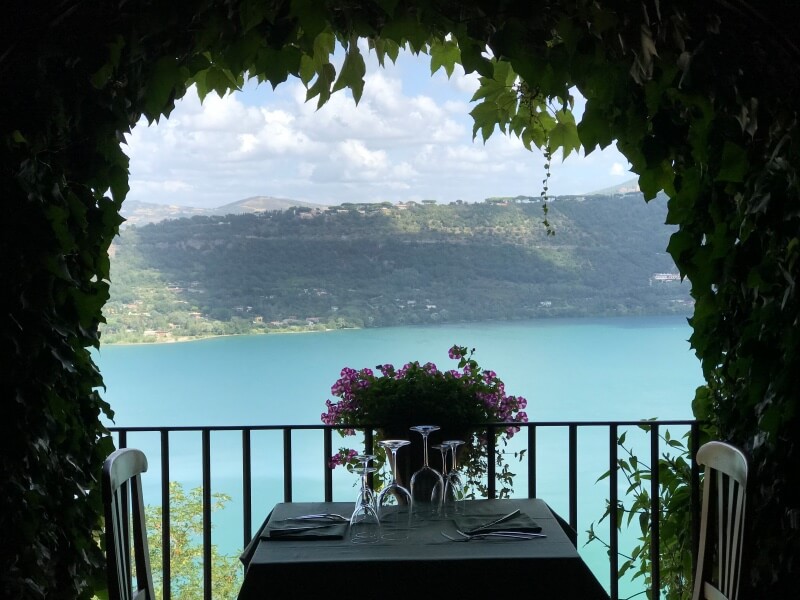

Getting to Castel Gandolfo
- By public transport: From Roma Termini station you’ll find trains leaving quite frequently and the ride is only around 40-45 minutes, depending on the train. It’s an easy journey and a perfect way to catch lunch in this lakeside town.
- If you’re short on time and would like things organized for you, you can take a Barberini Gardens tour from Rome (which includes the entrance ticket into the gardens)
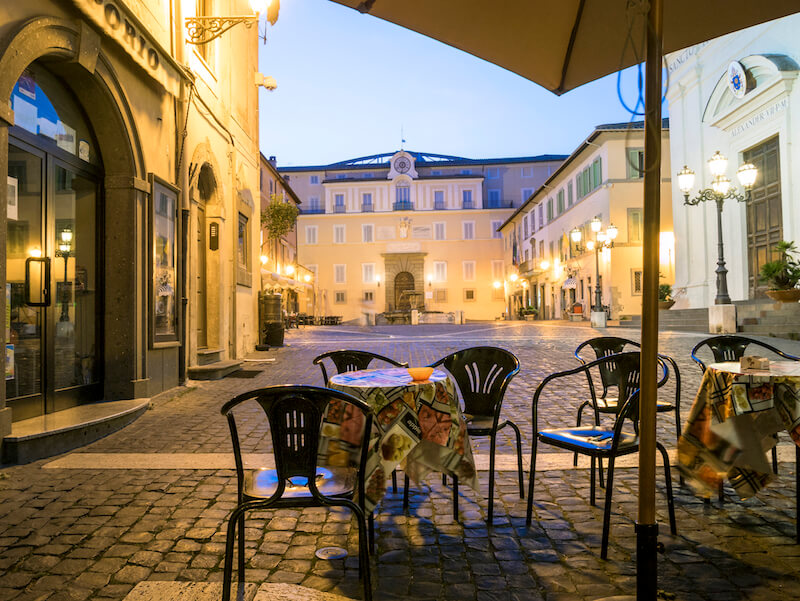
3. Norma: A picturesque village NOT in Tuscany!
When you hear of “lovely hilltop towns” or “rows of cypress trees”, do you instantly think of Tuscany?
You might, but you wouldn’t necessarily be right.
One of the more unusual day trips from Rome is just over an hour’s drive from the capital (and also accessible by public transport, but not easily). The hillside village of Norma, whose 3000 or so inhabitants like to throw a good party in summer. On weekends, you’ll hear plenty of music blasting along the main street.
Driving to Norma is “interesting”, the switchback road providing suspense and drama as you climb dizzyingly up from the olive farms that blanket the valley. A few deep breaths around each curve should help steady your nerves.
Arriving in Norma, the climb suddenly levels out as you unsuspectingly erupt into the village’s central piazza. Bounded at one end by the church, the main street leads towards the old town, with its cobblestones and medieval architecture and flowered window baskets.

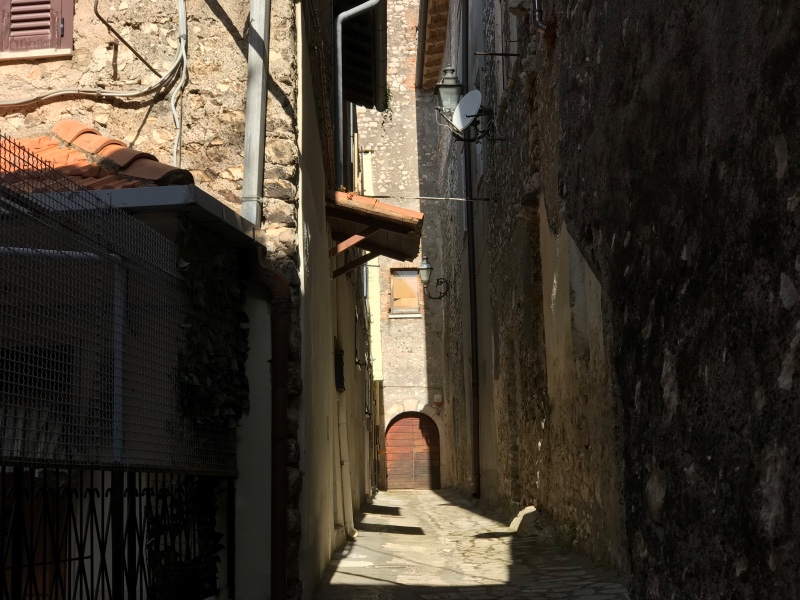
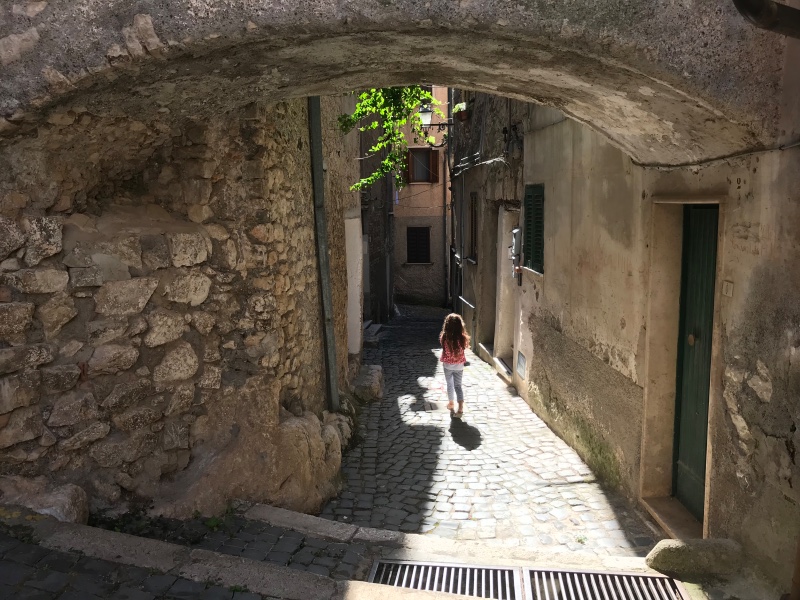
A few houses have been recently bought and renovated but so far, Norma has avoided gentrification. Instead of chain stores, the local shop sells pens, notebooks, magazines, lamps, jewellery, umbrellas, needles and thread, hair barrettes… but this being Italy, there’s a café or gelateria every few meters.
A couple of tourists wander about the narrow streets but mostly, Norma remains authentic, its infrastructure for use by locals, not foreigners.
It is time for the evening passeggiata, or stroll, a time-worn custom throughout the Mediterranean coast which once gave young men and women the opportunity to eye one another under the strict gaze of chaperones. Now, those shy would-be couples have been replaced by young tattooed mothers, the Senegalese leather salesman, teenagers on Vespas, grandfathers who despite smoking will probably live to be 100.
Men walk with men, women with women, while children on bicycles race across the worn stones and their yelling dominates the street. Grandmothers sit on plastic chairs whose legs tremble on the uneven pavement. They pull their hand-knit shawls across their shoulders to protect them from an imagined evening chill. The smell of fresh pizza mixes with French fries from across the street, and everyone seems happy to see everyone else.
What to do in Norma
Although it’s a short drive from Rome, this is a full day trip because there’s plenty to do.
The most intriguing sights are the ruins.
Once upon a time, Norma was called Norba, an old Roman city whose walls were built to keep a warring faction out. The ruins lie out of town but here, that means a ten-minute walk from the historic center. What’s stunning about these ruins is the beautiful scenery of the surrounding area, overlooking the valley all the way to the sea. The ruins may be far less spectacular than those of Ostia Antica, but only a tiny part has been excavated, and who knows what has yet to be uncovered.
My second recommendation is the Giardino da Ninfa, or the Garden of the Nymph, which the New York Times has called one of the world’s most romantic and beautiful gardens. The gardens are only open a few weekends a year (you have to book ahead). The website is in Italian but it’s pretty straightforward − scroll down their page for opening dates. Time your drive to see the garden either on your way up or on your way down to Norma, to avoid an extra journey along the serpentine road.
There’s plenty more to do around Norma, from visiting wine farms to sports for the younger at heart (and body): you could try the world’s longest zip line. At 2.2km, it drops more than 400 meters and reaches maximum speeds of 150 km per hour (93mph). Or perhaps just drive up and down the mountain for a thrill. The Norba ruins are also a great jumping off base for paragliders!


Getting to Norma (Latina)
- By car: Norma is about 1.5 hours from Fiumicino Airport, and renting a car at the airport is the easiest way to get there if you want to avoid driving in Rome. (If you’re staying in Rome, don’t even think of getting a rental car in the city – get out to the airport and rent it there.) A scenic drive is on SP217 over Chiampino to Lake Albano (you can combine Norma with Castel Gandolfo in one day if you’re traveling by car.)
- By public transport: Take the train from Roma Termini to Latina Scalo, which is some 15-20 minutes from Norma. In fact, if you look up, you can see Norma at the top of the hill. Trains run approximately every hour. You can catch a bus to Norma from the train station but they only run every two hours, and not on Sundays. So yes, it can be done, but Norma is best visited by car. Without one, you’ll miss some of the best nearby sights!
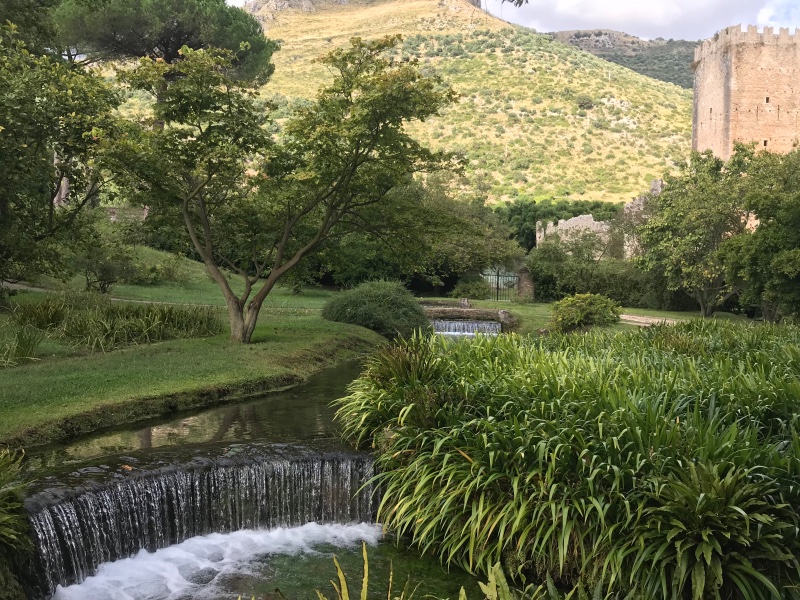
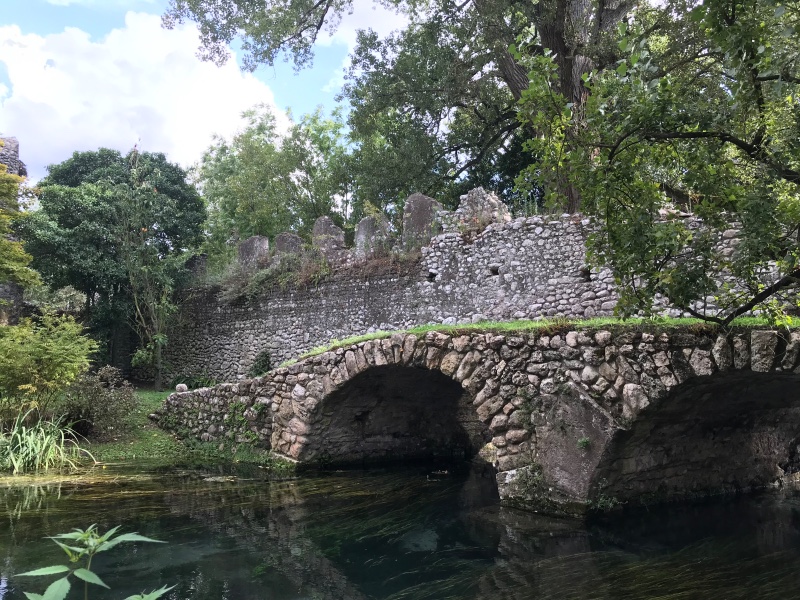
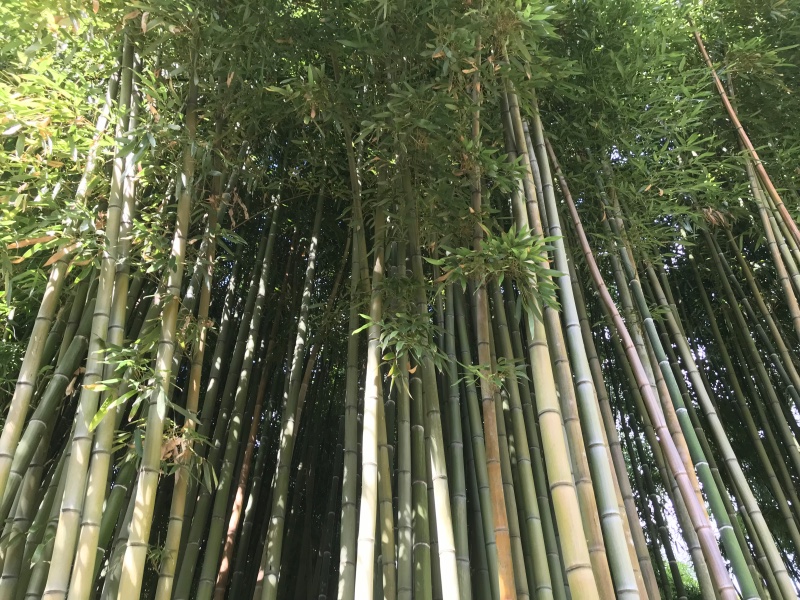
Where to eat in Norma
- La Piccola Fontana is not only delicious, but the terrace has has breathtaking panoramic views over the valley. Get there in time for sunset. It’s at the entrance to town, right next to the main square.
- Other great restaurants include the Vecchia Osteria Antichi Sapori on the middle of Via del Corso (excellent traditional food) and the Locanda da Valentino (high-quality inventiveness at reasonable prices). For a couple of dollars, you can buy a slice of pizza in several spots and sit outside for your own people watching.

Where to stay in Norma
I stayed at La Passeggiata, five minutes out of town right next to the Roman ruins, ideal if you want a peaceful rest while still being right next to the village.
The breakfast is extraordinary, with both sweet and non-sweet foods, including eggs and bacon. Fill up, and you won’t be hungry for hours.
Before you go…
If these three places aren’t enough, here are even more day trips from Rome!
